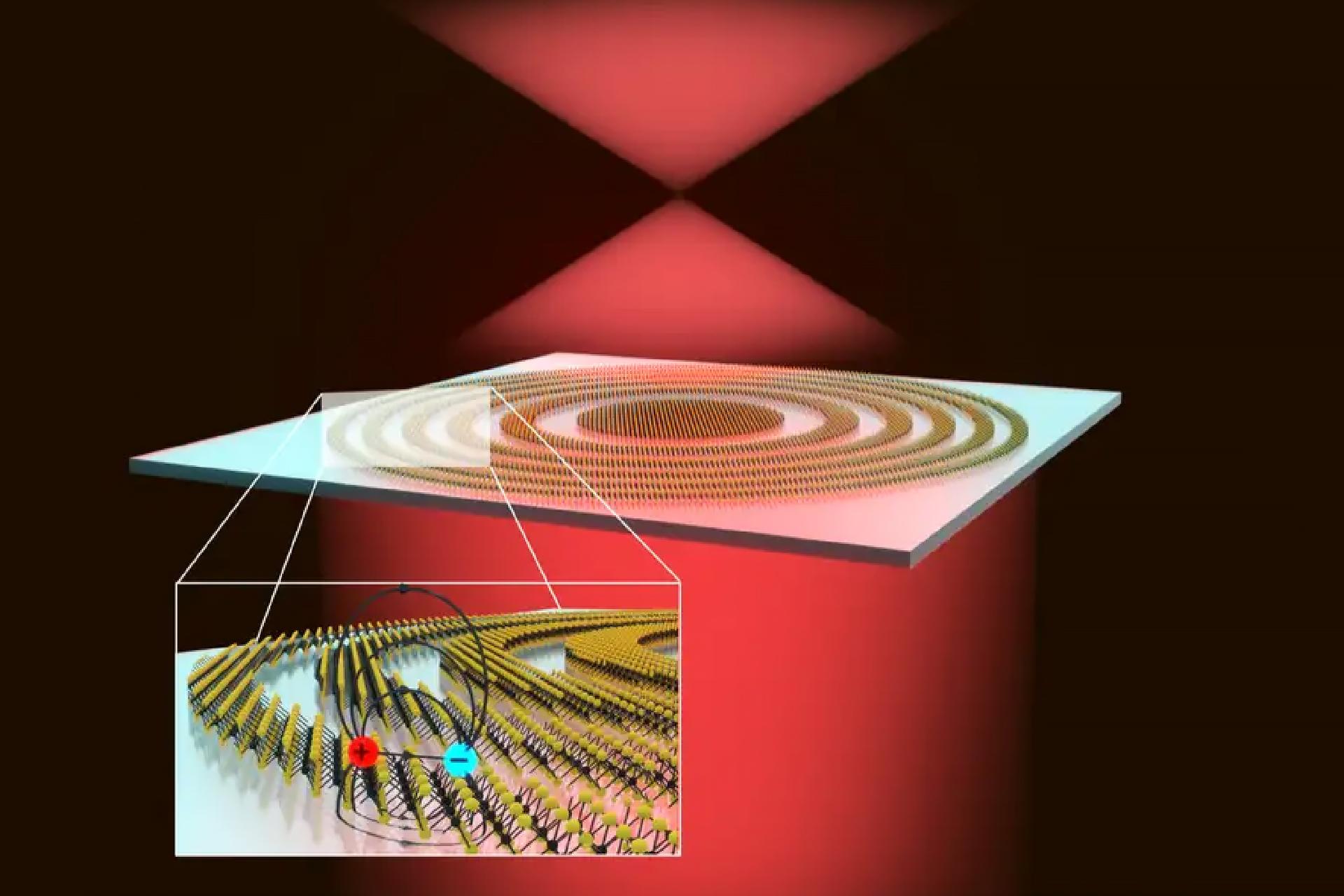By Michael Irving
Contact lenses get pretty thin nowadays, but they’ve got nothing on a new lens from scientists at Stanford and the University of Amsterdam. The team has created the world’s thinnest lens, measuring just three atoms thick.
Lenses are designed to collect light, bend it and focus it towards a specified point. That magnifies objects to correct our vision, see very tiny objects through microscopes, or very distant ones through telescopes. They’re usually made of curved glass or other transparent materials, like hydrogels in the case of contact lenses.
But this classic design can mean that large lenses are quite thick and heavy, especially when they’re made of glass. To save materials, an alternative design called a Fresnel lens was invented in the 19th century, originally for use in lighthouses. They use a series of concentric circles of material to diffract light into a focal point, sacrificing some image clarity but allowing for much thinner lenses.
And now, scientists have pushed that almost to the limit, creating a lens that’s just 0.6 nanometers (nm) thick, or only three measly atoms. That makes it the thinnest lens ever built, beating the previous record from 2016 which was 10 times thicker at 6.3 nm.
The new lens is made up of concentric rings of tungsten disulphide, which absorbs red light that hits it and re-emits it into a focal point 1 mm (0.04 in) away from the surface. It works by forming short-lived quasiparticles called “excitons,” which then decay and emit light. Because it selectively focuses red light, other wavelengths actually pass through unaffected, which could make for some intriguing applications.
“The lens can be used in applications where the view through the lens should not be disturbed, but a small part of the light can be tapped to collect information,” said Jorik van de Groep, an author of the study. “This makes it perfect for wearable glasses such as for augmented reality.”
The team says the next step is to see if the technique can be used to make more complex coatings that are activated by small electrical zaps.
The research was published in the journal Nano Letters.
Originally published in New Atlas.


